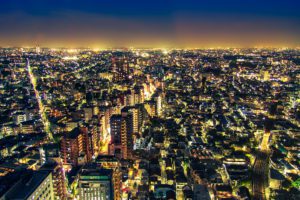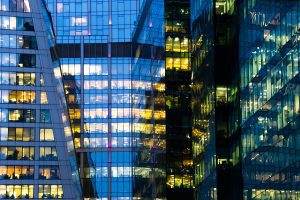This audio was created using Microsoft Azure Speech Services
[videojs mp4=”https://blog.se.com/wp-content/uploads/2013/06/JimAnderson1.mp4″ poster=”https://blog.se.com/wp-content/uploads/2013/06/JimAnderson.jpg”]
There’s a re-urbanization movement afoot that is bringing people back into cities – and it’s creating stress on systems that control everything from transportation and water to energy distribution and security.
That’s what Jim Anderson is seeing from his perch as Vice President of Smart Cities for Schneider Electric. Anderson is likely one of the few Schneider Electric employees for which the recent Xperience Efficiency 2013 event in Washington, D.C. was like another day at the office. The point of the event was to showcase the many different business units within Schneider Electric and all the solutions they have to offer. But Anderson works with these business units day to day, as many of them are involved in building a smart city.
“We look at cities as being the nexus of where energy issues are going to come into play,” Anderson says. His group breaks cities down into their various departments – such as transportation, water, energy, buildings and security – and tries to make each as efficient as possible. As a next step, his unit helps cities integrate systems across verticals and start to drive further efficiencies from the whole. The idea is to generate savings that cities can then use to improve education and other elements of city life.
“Overall we think we have a pretty strong message and a good story to talk to cities about, particularly the fact that they can do that today,” Anderson says. “There’s nothing stopping them from starting now.”
And it’s important that they do if they’re going to keep up with growth.
“We’re starting to see a re-urbanization of the population into cities,” he says. That’s putting additional stress on infrastructure that has been historically underfunded. “Clearly cities have to go do something. They recognize the need to do something,” he says.
But they don’t want to continue doing things as they have in the past, so are looking for help in how to take a new tack and drive more efficiency. That’s where the Smart Cities business unit comes in, able to bring to bear solutions from any relevant Schneider Electric group.
“We really are the one Schneider Electric approach to a customer,” he says. Got transportation congestion? Anderson’s team can deliver automated signaling solutions to help ease it. Other systems can detect water leaks, enhance energy distribution, increase building efficiency and provide cameras and other security solutions to keep buildings and cities safe. It can also provide the Resource Advisor dashboard to give the city a holistic view that enables it to track, manage and improve energy posture across multiple systems.
The Smart City team also offers business models that help cities with issues such as financing the kinds of upgrades that will drive efficiency. “We can bring in performance contracting as a business model to help with financing of things, because cities generally don’t have a lot of extra money hanging around to go spend on their infrastructure,” he says.
As for Xperience Efficiency 2013, Anderson says it’s great to have all the various Schneider Electric businesses represented, and to attract customers from all aspects of the industry. “It’s really improving awareness and understanding of who Schneider is and what we can bring in terms of solutions,” he says.
Xperience Efficiency 2013 has completed its U.S. run in Washington, D.C. and Dallas. It now moves on to cities including Beijing, Bogotá, Moscow, São Paulo, Suzhou and Shenzhen.



Conversation
Jamie
11 years ago
Nice. Will I be able to see them at 2nd Annual Smart Cities Summit at Qatar this December? https://bit.ly/16KQHEQ